FAQ
- Bolivia climbing questions
-
Mallorca island and rockclimbing
- What are main specifics of rockclimbing trip to Mallorca
- Mallorca island impressions
- Rockclimbing safety Spain
- Mallorca climbing accommodation
- What season is possible for rockclimbing in Mallorca
- Transport accessibility of climbing sectors in Mallorca
- Active vacation in Mallorca
- Saint Anthony night in Mallorca
- Peru climbing questions
- Gear reviews
-
Safety in the mountains
- How NOT to climb the summit?
- Mountain navigation
- At the limit of possibilities
- Mountain thunderstorm
- Solo ascents and mountain trips alone
- Mutual responsibility in mountaineering
- Safety illusions in the mountains - a rope
- Independent team of two
- Mountain troubles
- Psychological problems in the mountains
- Health in the mountains
-
Elbrus questions
- Elbrus climbing gear
- Climbing Elbrus with children?
- Mount Elbrus location?
- Elbrus logistics
- How to get to Mount Elbrus?
- Elbrus German airfield?
- Elbrus difficulty grade
- 5 points beginner must know about Elbrus
- How to prepare for Elbrus?
- Are there avalanches on Mount Elbrus?
- Climbing Elbrus solo?
- Seasonality of climbing Mount Elbrus
- How much time climbing Elbrus takes?
- Clothes for Mount Elbrus?
- Pressure at the top of Elbrus?
- Elbrus air temperature
- Elbrus sightseeing
- How much to climb Elbrus
- Gear questions
- Mountaineering questions
- Mountain climbing training
-
Rockclimbing questions
- Rockclimbing gear
- How to choose your first rockclimbing shoes
- The hand power in roclcimbing
- What is Rockclimbing tours
- Non olymnic rockclimbing
- What is rockclimbing?
- Where do you climb?
- Where and when we organize our rockclimbing programs?
- What is rockclimbing?
- Rockcliming program class?
- Climbing motivation
- Horse riding tours
- Iceclimbing questions
-
Questions on the alpine programs
- What to climb in Morocco?
- Weekend summit climb
- Georgia 2023
- Pico Aneto - what is that mountain?
- Mountain programs format
- Mountain climbing food ration
- Queries on the alpine program climbing Mount Bazarduzu
- Queries on the Kamchatka alpine program climbing
- What is combined program?
- What is sightseeing program?
- What is pilot program?
- What programs you have of the medium complexity level?
- Basic expedition rations
- Prices for the mountain climbing programs
- Queries on the Mountain Course in Adyl Su valley
- Program complexity?
- Questions about MCS AlexClimb
- Questions related to trekking programs
Aconcagua successful climb
Version of the text for mobile device in English
Versión del texto para dispositivo móvil en español
My mountaineering programs in Argentina
What is the secret of successful ascents to the highest mountain in South America - Aconcagua, 6962 m high? How not to find yourself in a losing situation when trying to climb to the summit of Mount Aconcagua?

The summit of the highest mountain in South America - Aconcagua
In recent years, in the Argentine province of Mendoza, where several large national parks are located, there has been a significant increase in demand for services related to mountain sports. In particular - with climbing the highest mountain in Argentina and South America - Mount Aconcagua.
With a high and constantly growing flow of people wanting to climb to the summit of Aconcagua, the cost of related services increases and the economy of the region is developing.

The name Aconcagua is translated from the Quechua language as 'Stone Guardian'
At the same time, the "Kilimanjaro syndrome" is becoming noticeable on the Mount Aconcagua Classic ascent route - with an increasing number of attempts to climb the summit, the percentage of successful ascents is noticeably decreasing.
The reason for this phenomenon is not climate change or pronounced seasonal features of the Mount Aconcagua ascent route. Most failures or even accidents occur, to a greater extent, due to subjective factors: due to overestimation of one's own strength, lack of experience or (most generally) lack of altitude acclimatization.
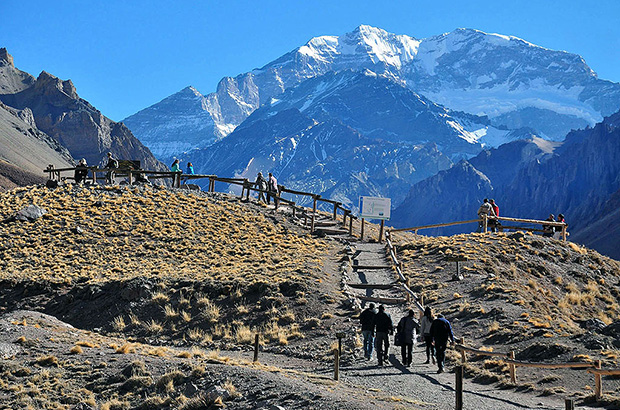
Aconcagua National Park, Argentina
The essence of the problem is quite simple: it lies in the significant altitude of the Mount Aconcagua summit and, accordingly, specific requirements for the tactical plan of the ascent, acclimatization and physical fitness of the participants.
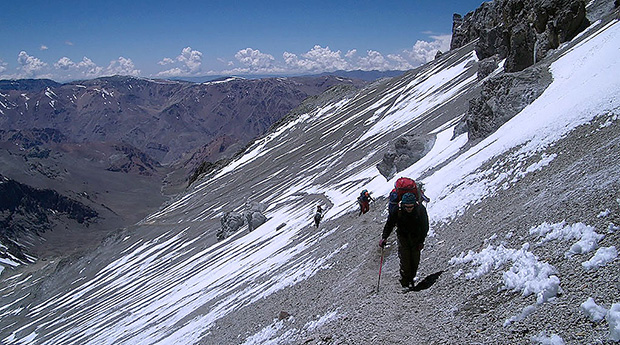
Climbing Mount Aconcagua
As a rule, when forming commercial groups, the focus is made on the commercial optimization of the program. The ascent schedule is shortened in terms of time, participation in the expedition becomes (conditionally) accessible to the clients without mountaineering experience or sufficient physical fitness.
It is not surprising that such an approach leads to frequent failures, health problems and general disappointment in mountain climbing.
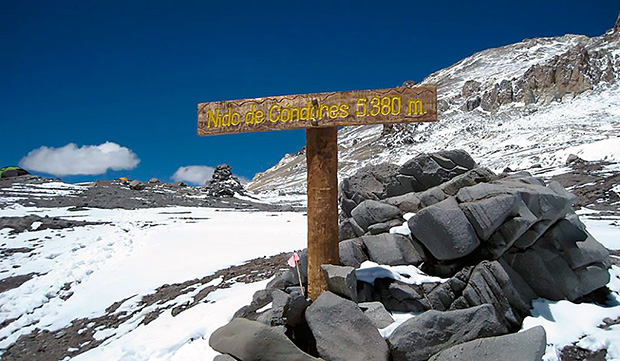
Condor's Nest is the fourth base camp on the Mount Aconcagua ascent route, altitude 5380 m
Nevertheless, if a number of conditions are met, it is possible to significantly reduce the risk of failure when climbing Mount Aconcagua. First of all, we are talking, of course, about high altitude acclimatization.
Most companies selling the Mount Aconcagua ascent program offer to their clients "acclimatization" along the main route - additional overnight stays and radial hikes, without altitude drops and recovering from the high-altitude load.
This approach has the highest risk of failure for the people coming from locations close to the sea level.
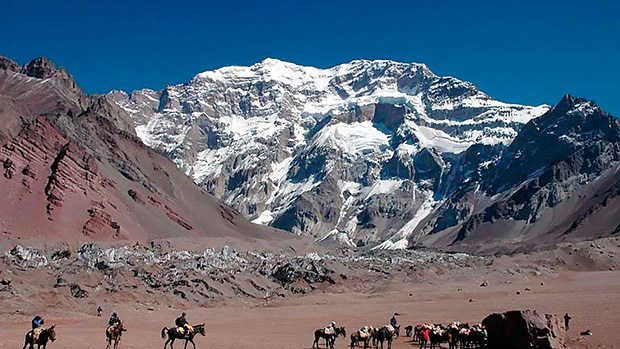
Climbing Mount Aconcagua - the use of pack animals significantly simplifies expedition logistics
Theoretically, Mount Aconcagua ascent route is possible for such an approach - the route is 37 km long, it is divided into 7 day hikes with overnight stays. However, a continuous gain of altitude, even stretched over a significant distance, is not optimal for acclimatization tasks.

Altitude profile of the Mount Aconcagua Normal route - acclimatization is assumed due to one drop in altitude from 5900 to 5500
At the same time, acclimatization or pre-acclimatization is the key factor for a safe and successful ascent. Both on Mount Aconcagua and on other peaks in the "symptomatic acclimatization" zone.
The optimal solution would be to add another training / acclimatization (easier) ascent to the program. But for many clients, extending the overall program by at least a week becomes unacceptable in terms of time.
MCS AlexClimb high altitude acclimatization program in the area of the volcano Ojos del Salado
It would seem that extending the program schedule with a high probability may make it unsuitable for a commercial format.
This is a misconception. If the acclimatization is carried out on another route, more compact in time, then it becomes possible to reduce some of the days on the main ascent of Mount Aconcagua, which are usually reserved for acclimatization.
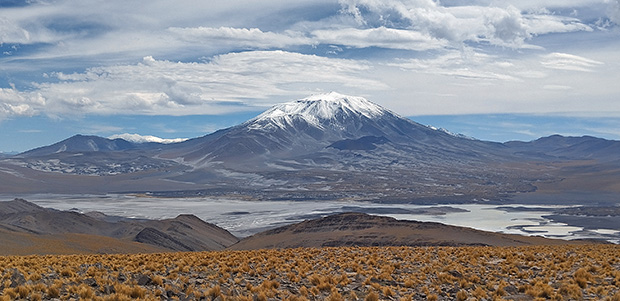
Acclimatization before climbing Mount Aconcagua
Thus, even adding another acclimatization climb to the Mount Aconcagua expedition, we do not go beyond the reasonable time frame of the ascent - 12-14 days, making the overall program more diverse and interesting, and the Aconcagua climb - more probable.
Understanding the main reason for the low level of success in the Mount Aconcagua climbs and continuously being in Argentina for the last two years, I was developing an effective acclimatization program for the Mount Aconcagua climbing program.
Comfortable accommodation during acclimatization before climbing Mount Aconcagua
My main goal was to combine into one "set" two of the most famous mountaineering challenges of Argentina - climbing volcano Ojos del Salado and Mount Aconcagua.
As a result of my work, it became possible to connect the logistics and test several training and acclimatization programs, smoothly leading participants of the expeditions to the safe climb to the critical altitudes of 6000+ m.
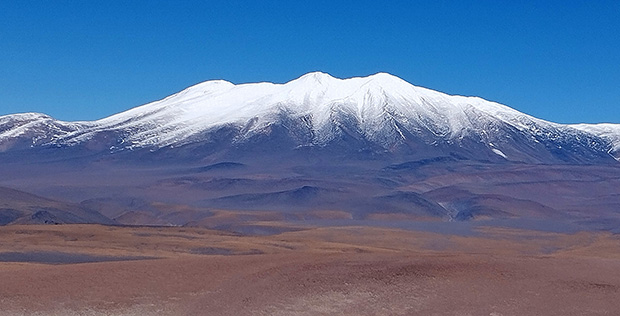
The second highest mountain (volcano) in Argentina and South America - volcano Ojos del Salado 6893 m
These programs not only make it possible to distribute the altitude load on the body when climbing volcano Ojos del Salado or Mount Aconcagua, but also, under ideal conditions, to make a magnificent "combo", the best in South America - to climb Ojos del Salado and Aconcagua within one expedition.

On the summit of Ojos del Salado (route from Argentina)
Text by Alex Trubachev
Your mountaineering and rock climbing guide in Argentina, Peru, Bolivia and Chile
MCS EDIT 2024
Our Principles
AlexClimb Rule #1 - Safety First
From the very beginning of our activity, here nearly 16 years, the first Principle of work of School of mountaineering and rock-climbing of MCS AlexClimb is the Safety Priority. On the basis of this Principle all process of training is based, all programs and rounds are developed and carried out only within this main principle. We consider that at professional approach to development of programs, at personal discipline and correctly put motivation - occupations by mountaineering and rock-climbing are COMPLETELY safe. And from the return - all troubles and accidents in our sport come from nonprofessionalism, from ignorance or neglect by elementary standards of safety, from irrational motivation, from revaluation of own forces and opportunities. All these prerequisites we COMPLETELY EXCLUDE in our work - ours Rock-climbing, Ice climbing and Mountaineering are based on one Principle - the Safety Priority. In rock-climbing, mountaineering and ice climbing, the Priority of Safety of MCS AlexClimb-is your personal security and comfort irrespective of, than we are engaged - we train muscles and we work technology of the movement in the sports hall and on the rock climbing wall, we make the way through snowstorm to top or we relax on golden sand of the Caribbean beach after hot day of trainings on rocks. The Safety priority - the main credo of School of mountaineering and rock-climbing of MCS AlexClimb.
AlexClimb Rule #2 - Leave No Trace
Closely interacting with Nature, working with the active programs in mountains, woods, lakes and rivers, we perfectly understand the importance of carefull and respectfull bahavior towards the Nature, for its resources. From the very beginning of our outdoor-activity we adopted rules of Leave No Trace technique - the standard of behavior of the person accepted in all the civilized world in relation to environment and especially - to the wild nature. After all on the relation of people to the nature near which they exist, itself can draw dalekoidushchy conclusions on the relation of these people to... Where and as we didn't travel - we don't reserve any garbage, we try to reduce whenever possible our influence on environment to a minimum. We clear earlier zagryazyonny tourist parking of the left garbage, we take out and we take out to utilization places that to us other people left there. We consider that only thus, at personal individual consciousness of each citizen, each tourist, climber or autotraveller, we will be able to keep the nature surrounding us in its state, natural, suitable for life, - in it pledge of the healthy future for ourselves and our children.





